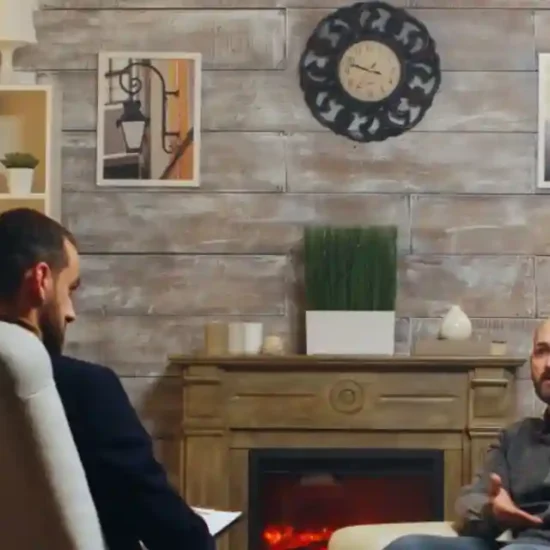Accelerated Resolution Therapy (ART) is a relatively new and innovative approach to psychotherapy that has been gaining attention for its ability to quickly and effectively treat a variety of mental health issues.
In this blog, we will explore the different aspects of ART, discuss the accelerated resolution therapy pros and cons, and provide you with a comprehensive understanding to help make informed decisions about whether this therapy might be right for you.
ART has been recognized as an “evidence based practice” by the Federal government’s Substance Abuse and Mental Health Services Administration (SAMHSA).
Accelerated Resolution Therapy
Accelerated Resolution Therapy is a form of psychotherapy that was developed in 2008 by Laney Rosenzweig, a licensed mental health counselor. ART combines elements from various traditional therapies, such as cognitive-behavioral therapy (CBT), eye movement desensitization and reprocessing (EMDR), and guided imagery, to create a unique and efficient approach to mental health treatment.
ART is primarily used to treat conditions such as post-traumatic stress disorder (PTSD), anxiety, depression, phobias, and other stress-related disorders. The therapy is known for its ability to bring about rapid changes, often within just one to five sessions, which is significantly faster compared to many traditional forms of therapy.
Components of Accelerated Resolution Therapy
ART involves several key components that work together to produce its therapeutic effects:
1. Voluntary Memory/Image Replacement
Patients are guided to focus on a distressing memory and then intentionally replace it with a positive or neutral image. This process helps diminish the emotional distress associated with the original memory, facilitating healing and improved mental well-being.
2. Visualization Techniques
Visualization techniques help patients imagine positive or neutral scenarios instead of distressing ones. This process changes how they feel about the traumatic memory, making it less upsetting and helping them heal.
3. Eye Movements
Eye movements involve the patient following the therapist’s hand or another object with their eyes. This helps the brain reprocess and desensitize traumatic memories, reducing their emotional impact and aiding in recovery.
4. Relaxation and Grounding
Relaxation and Grounding techniques help patients stay calm and focused during sessions. These methods, such as deep breathing or mindfulness, ensure that patients feel safe and present, making it easier to process and heal from traumatic memories.
These components are designed to help patients access and process traumatic memories in a way that reduces their emotional impact and helps them achieve a sense of resolution.
Steps in an Accelerated Resolution Therapy Session
A typical ART session follows a structured process that includes several key steps:
- Initial Assessment: The therapist conducts an initial assessment to understand the patient’s issues and goals for therapy.
- Relaxation Exercises: The session begins with relaxation exercises to help the patient feel calm and safe.
- Image Visualization: The patient is asked to visualize the traumatic event or distressing memory.
- Eye Movement Exercises: The therapist guides the patient through eye movements while focusing on the traumatic memory.
- Memory or Image Replacement: The patient is encouraged to replace the distressing images with positive ones.
- Processing and Reflection: The session ends with a discussion of the experience and any changes in feelings or perspectives.
How does it work?
Accelerated Resolution Therapy (ART) uses eye movements to change how traumatic memories are stored in the brain, helping with relaxation and symptom relief. The therapist asks the person to focus on a traumatic memory and any uncomfortable feelings. While the therapist moves their hand side to side near the person’s face, the person follows these movements with their eyes, which helps them relax.
The person then visualizes the traumatic experience from start to finish, continuing the eye movements. This helps to reduce the physical and emotional sensations linked to the memory. The process is repeated until the person can mentally go through the entire experience with fewer distressing sensations.
Next, the person imagines a new, preferred way to view the traumatic event, again using horizontal eye movements to reinforce this change. The therapist ensures the person can recall the original memory without significant distress and successfully shift to the new, rescripted version, often using additional visualization techniques to further alter the memory.
Pros of Accelerated Resolution Therapy
One of the main reasons ART has gained popularity is due to its numerous benefits. Here, we will discuss the accelerated resolution therapy pros and cons, starting with the advantages:
- Rapid Results: ART is known for producing quick results, often within one to five sessions, making it an efficient option for those seeking fast relief.
- Non-Invasive: The therapy does not involve medication or invasive procedures, which can be appealing to individuals looking for a more natural treatment approach.
- Effective for Various Conditions: ART is effective in treating a range of conditions, including PTSD, anxiety, depression, and phobias.
- Minimal Emotional Distress: Unlike some therapies that require patients to extensively discuss and relive traumatic experiences, ART focuses on visualization and image replacement, which can be less distressing.
- Sustainable Outcomes: Studies have shown that the positive effects of ART are often long-lasting, with patients experiencing sustained improvements in their symptoms.
- Flexible Application: ART can be adapted to suit individual needs and preferences, making it a versatile therapy option.
Cons of Accelerated Resolution Therapy
While ART has many benefits, it is also important to consider some of the potential drawbacks. Here, we will discuss the accelerated resolution therapy pros and cons by examining the disadvantages:
- Limited Awareness: As a relatively new therapy, ART may not be as widely known or available as more established treatments.
- Need for Specialized Training: Therapists require specific training to administer ART, which can limit access to qualified practitioners.
- Cost: ART sessions can be expensive, and insurance coverage may vary, potentially making it less accessible for some individuals.
- Variability in Results: While many patients experience significant improvements, the effectiveness of ART can vary from person to person.
- Lack of Extensive Research: Although there is growing evidence supporting ART, more extensive and long-term studies are needed to fully understand its efficacy and potential limitations.
FAQs
Que: Is Accelerated Resolution Therapy the same as EMDR?
Ans: No, while ART and EMDR share some similarities, such as the use of eye movements, they are distinct therapies with different techniques and approaches.
Q: Is ART suitable for everyone?
Ans: ART can be beneficial for many people, but it may not be suitable for everyone. It is important to consult with a trained ART therapist to determine if it is the right fit for your specific needs.
Q: What conditions can ART treat?
Ans: ART has been used to treat PTSD, anxiety, depression, phobias, and other stress-related disorders.
Q: How quickly can I expect to see results with ART?
Ans: Many patients experience significant improvements within one to five sessions, but results can vary.
Conclusion
Accelerated Resolution Therapy offers a promising and innovative approach to treating a variety of mental health conditions. By exploring the accelerated resolution therapy pros and cons, we can see that ART has many potential benefits, including rapid results, non-invasiveness, and effectiveness across various conditions. However, it is also important to consider the potential drawbacks, such as limited awareness, the need for specialized training, and variability in results.
If you are considering ART as a treatment option, it is essential to consult with a trained ART therapist to determine if it is the right fit for your needs. With continued research and growing awareness, ART has the potential to become a valuable tool in the field of mental health, offering hope and healing to those in need.
Take the first step towards a healthier mind and connect with BHouses for better healing.










